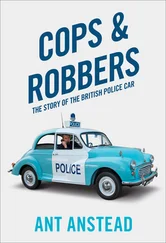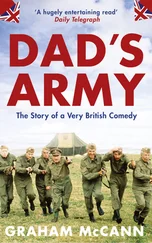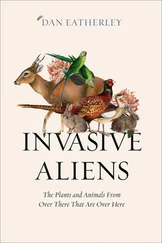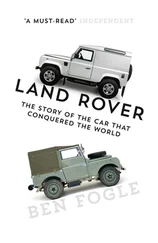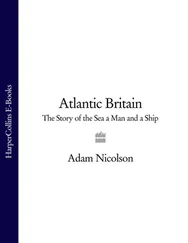When reformist Robert Peel (whose Christian name is the reason why police are still commonly referred to as bobbies) became Home Secretary in 1822, his initial attempts to create a national police force failed. However, he succeeded in putting through the Metropolitan Police Act in 1829, creating a force with just over a thousand officers. Peel was determined to establish professional policing in the rest of England and Wales, and the Special Constables Act of 1831 allowed Justices of the Peace (JPs) to conscript men as special constables to deal with riots, and this was built on by the Municipal Corporations Act 1835, which established regular police forces under the control of new democratic boroughs, 178 in all. It was not a great success and was often ignored; however, the later County and Borough Police Act 1856 built on the idea, committed proper financing and decreed that a rural police force was to be created in all counties; it was one of these, the county force of Hertfordshire, that I joined.
At this point in history there was still a way to go to achieve the police force that we have today, but the beginnings of our modern policing system could be seen in the counties and in Glasgow. By the 1860s a nationwide force of separate bodies acting to one set of rules and connected by transport links (horse-drawn initially, but increasingly using the railway system, which was expanding rapidly by 1850) existed. The car would eventually be invented in 1885, but police forces all over the world simply weren’t ready to manage this new and politically divisive mode of transport. Britain was no exception.
The Office of Constable: the basis of UK policing
On appointment, each police officer makes a declaration to ‘faithfully discharge the duties of the Office of Constable’, and all officers in England and Wales hold the Office of Constable, regardless of rank. They derive their powers from this and are servants of the Crown, not employees. The oath of allegiance that officers swear to the Crown is important as it means they are independent and cannot legally be instructed by anyone to arrest someone; they must make that decision themselves. The additional legal powers of arrest and control of the public that are given to them come from the sworn oath and warrant, which is as follows:
‘I do solemnly and sincerely declare and affirm that I will well and truly serve the Queen in the office of constable, with fairness, integrity, diligence and impartiality, upholding fundamental human rights and according equal respect to all people; and that I will, to the best of my power, cause the peace to be kept and preserved and prevent all offences against people and property; and that while I continue to hold the said office I will to the best of my skill and knowledge discharge all the duties there of faithfully according to law.’
This is the oath that I myself took.

CHAPTER TWO Chapter Two – These Devilish Machines Scare the Horses, You Know Chapter Three – Adapt and Arrest Chapter Four – Post-War Peace; London Sets the Way Chapter Five – Send the Area Car Chapter Six – Panda Cars Chapter Seven – Traffic Cars Chapter Eight – Police Car Livery and Equipment Chapter Nine – Commercial Break Chapter Ten – Performance Cars Chapter Eleven – It’s Got Cop Shocks Chapter Twelve – Buying Cars – Police Vehicle Procurement and Demonstration Vehicles Chapter Thirteen – Fantasy Cars Chapter Fourteen – Police Driving Chapter Fifteen – Policing on the Screen Plate Section Footnotes Acknowledgements Picture Credits About the Publisher
THESE DEVILISH MACHINES SCARE THE HORSES, YOU KNOW Chapter Two – These Devilish Machines Scare the Horses, You Know Chapter Three – Adapt and Arrest Chapter Four – Post-War Peace; London Sets the Way Chapter Five – Send the Area Car Chapter Six – Panda Cars Chapter Seven – Traffic Cars Chapter Eight – Police Car Livery and Equipment Chapter Nine – Commercial Break Chapter Ten – Performance Cars Chapter Eleven – It’s Got Cop Shocks Chapter Twelve – Buying Cars – Police Vehicle Procurement and Demonstration Vehicles Chapter Thirteen – Fantasy Cars Chapter Fourteen – Police Driving Chapter Fifteen – Policing on the Screen Plate Section Footnotes Acknowledgements Picture Credits About the Publisher
On Monday 20 January 1896, Mr Walter Arnold, who worked for his family’s agricultural machine-engineering concern in East Peckham, Kent, was driving along the Maidstone Road through the neighbouring village of Paddock Wood at an estimated 8mph, 4mph or so below the maximum speed of the ‘Arnold Motor Carriage Sociable’ (a Benz copy produced under licence) that he was driving. Local constable J.C. Heard, of the Kent County Constabulary, saw this outrageous behaviour from the front garden of his cottage and set off in hot pursuit on a single-speed bicycle. In that one moment the relationship between the UK police and the motorist was, partially at least, set.
The speed limit in the area was a mere 2mph, so Arnold was thus exceeding it fourfold – although how Constable Heard measured this accurately enough to definitely state this is, of course, unknown. Arnold was chased (on the bicycle) and eventually caught by the presumably quite fit local bobbie after a five-mile pursuit! It is recorded, with some understatement I suspect, that Constable Heard had to pedal at his hardest for quite some time (at 8mph that’s just under 40 minutes’ pedalling time) before catching the unfortunate Mr Arnold. Arnold was charged with four offences; three pertaining to the Locomotives Act and one offence of speeding. The case went to trial, and although Arnold’s barrister, a Mr Cripps, argued that the law shouldn’t apply to the new lightweight ‘autocars’ and that Arnold had a carriage licence (a system designed for horse-drawn carriages), Arnold was found guilty on all counts and ordered to pay a total fine of £4 6 shillings, of which only a 1 shilling fine and 9 shilling costs was for the speeding offence. When you take into account that his car sold for £130, this fine seems quite paltry, but remember that cars back then were a luxury, and the average weekly wage was less than £1 for a 56-hour working week.
Arnold was not only the first motorist fined for speeding in the UK, but it is believed that he was the first person in the world to claim this dubious honour. The car as a concept was young, and, much like laws surrounding the internet in the early twenty-first century, the legislators took some time to draft new laws that applied to these vehicles. Some eminent politicians of the time even felt it wasn’t worth the bother, as they deemed that these horseless carriages were bound to be just a phase, the attitude being that they would be short-lived as they frightened the horses for goodness sake!
Arnold probably wasn’t too unhappy with the publicity that his case generated, because he was in fact one of the country’s first car manufacturers and dealers. His career began by selling new, imported Benz cars from Germany, then between 1896 and 1899 he manufactured a licensed copy of the Benz called the Arnold Motor Carriage. At this point demand for these newfangled machines was high and Arnold is quoted as saying in a newspaper report towards the end of 1896 that, ‘if we had twenty in stock they could be disposed of in a week’. No documents exist hinting in any way that he deliberately drove through Kent intending to get caught, but you have to wonder, don’t you? If he did do it deliberately he was a marketing genius and well ahead of his time. He apparently sped past the Constable’s house, and as a local himself he would surely have known where the local bobbie lived. If he did get caught deliberately, he exhibited an understanding of the media and the gentle art of car marketing at least fifty years ahead of his time – secretly, I kind of hope he knew exactly what he was doing, and thus Arnold placed down a permanent marker for all car sales people to follow. Take a bow, my man.
Читать дальше



